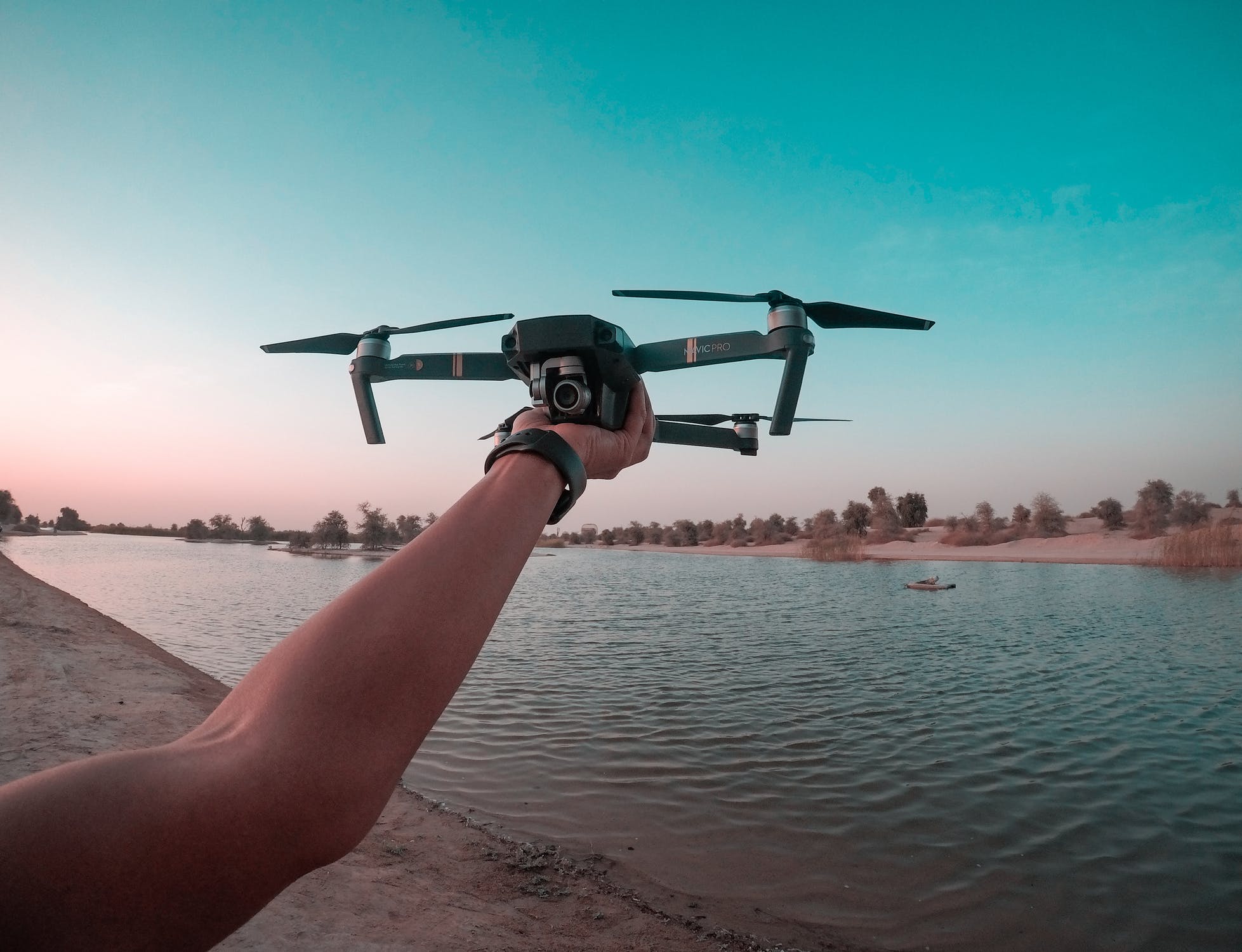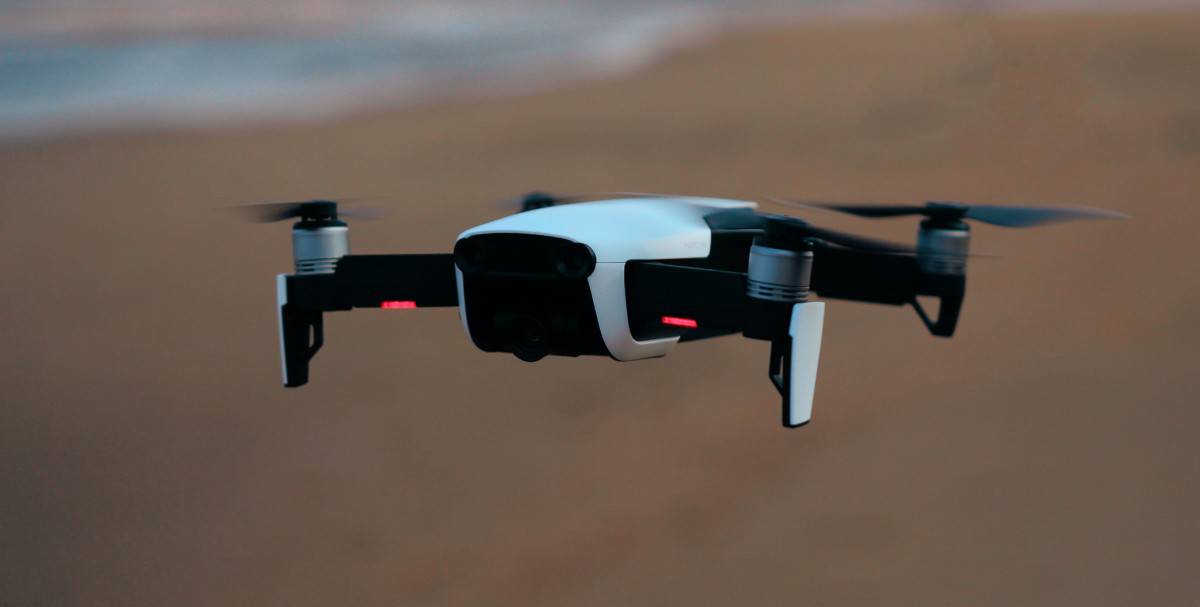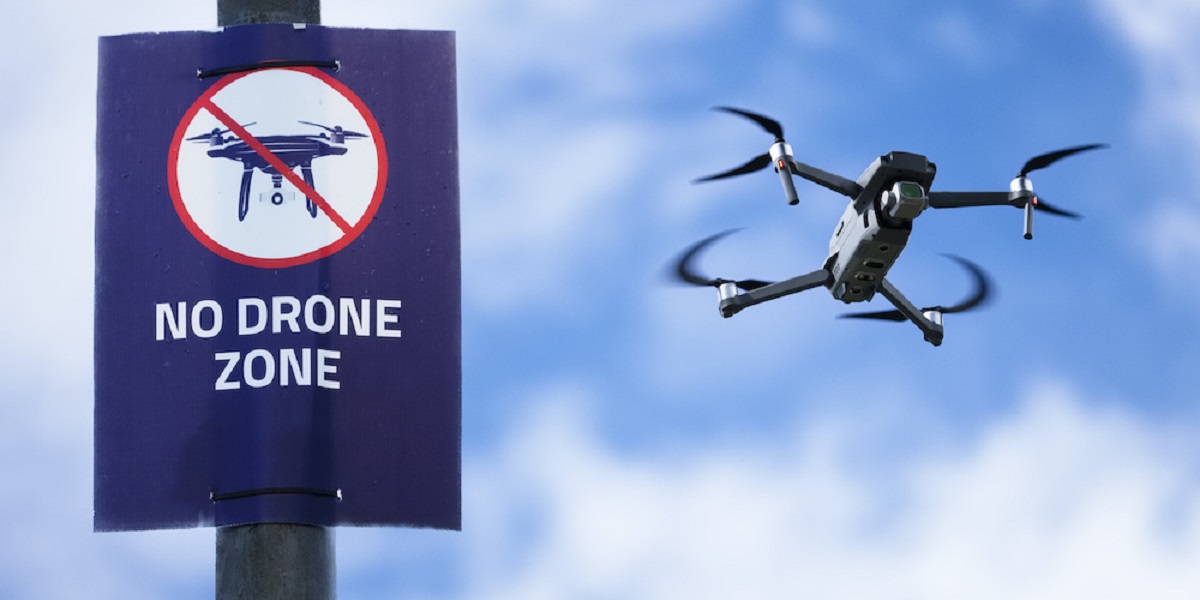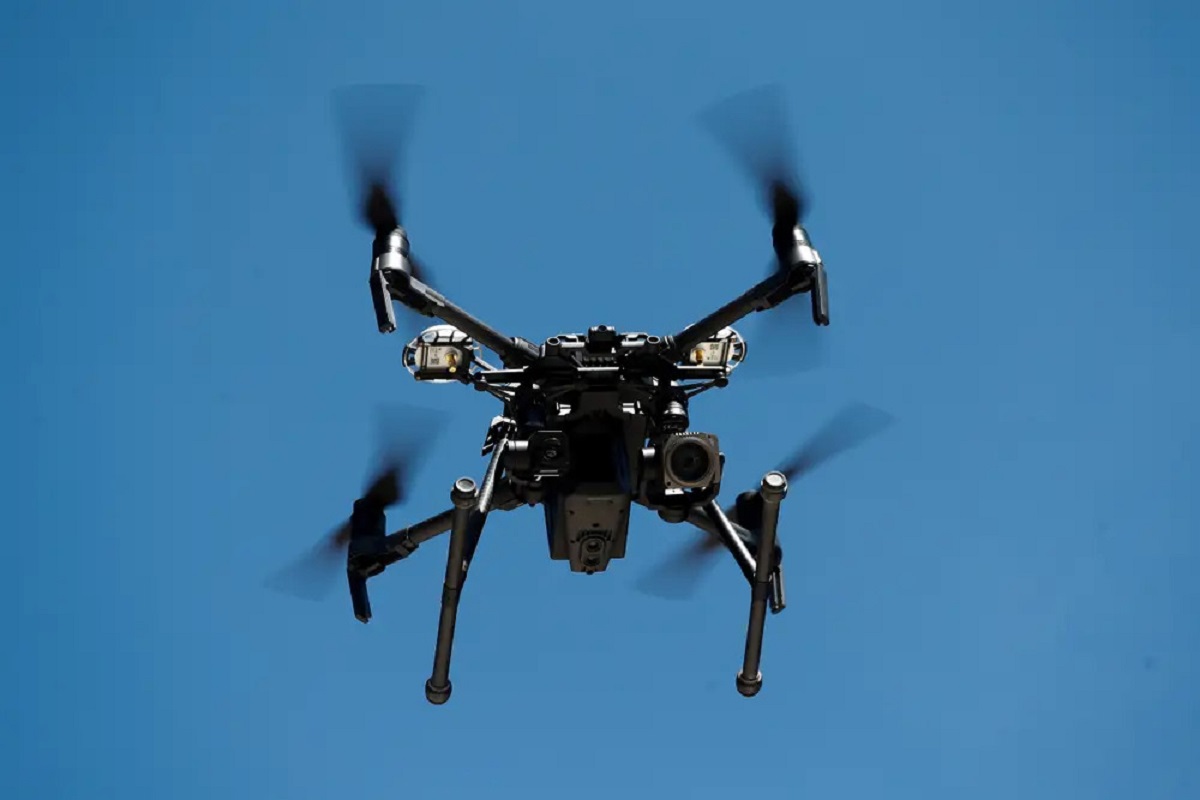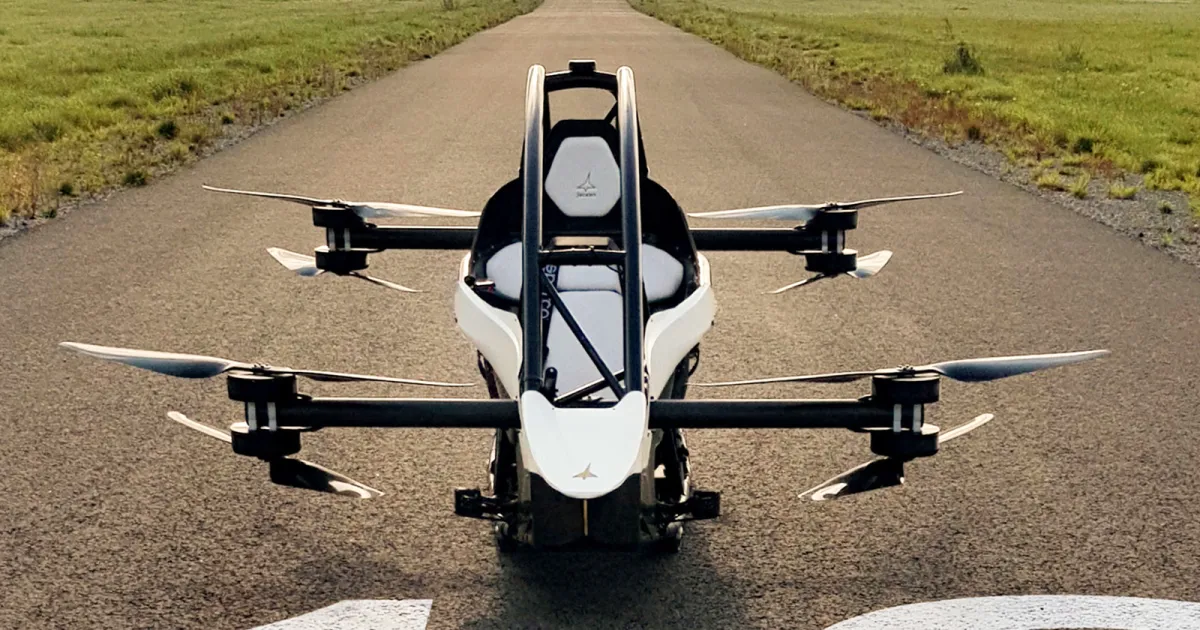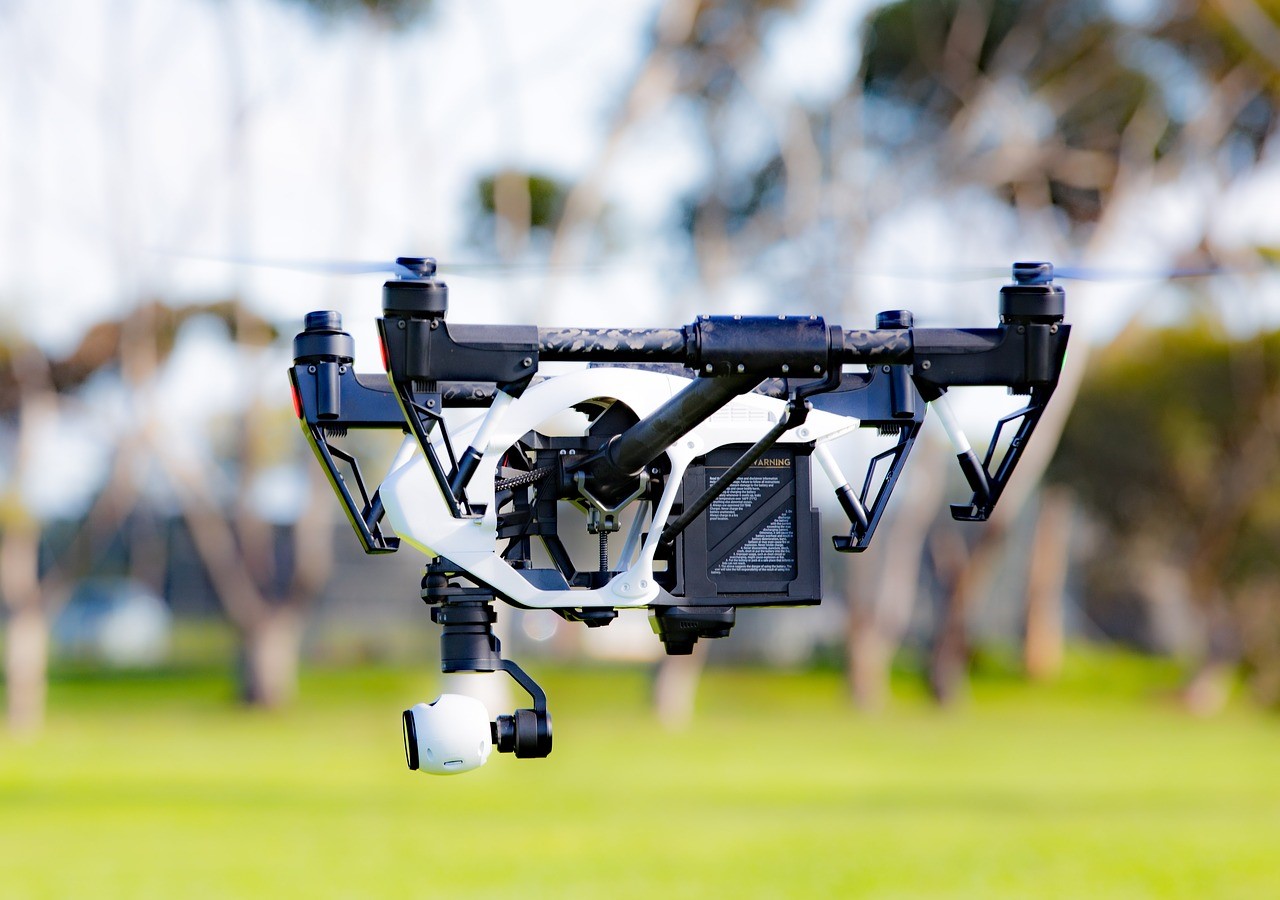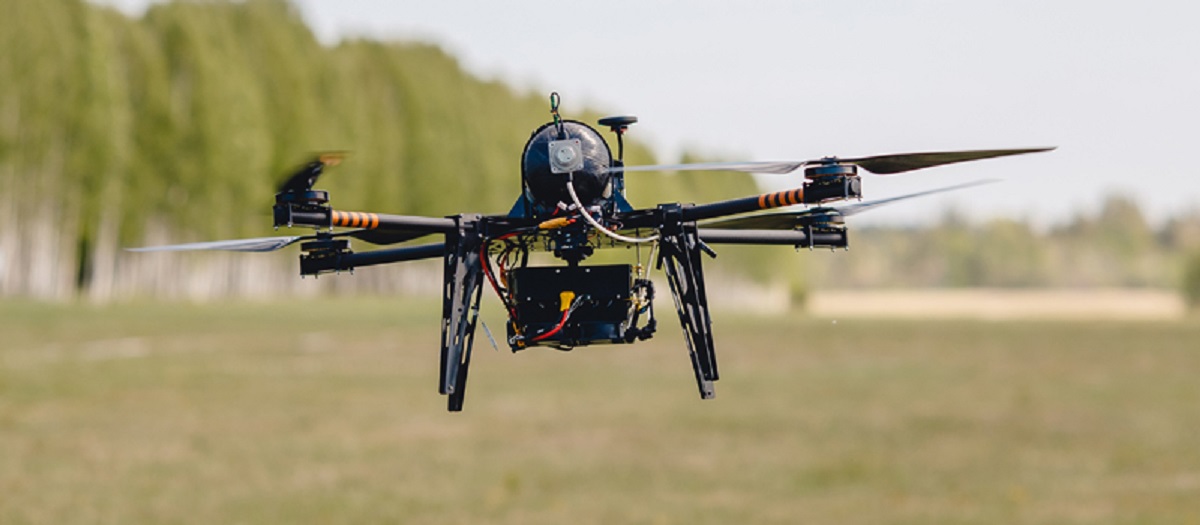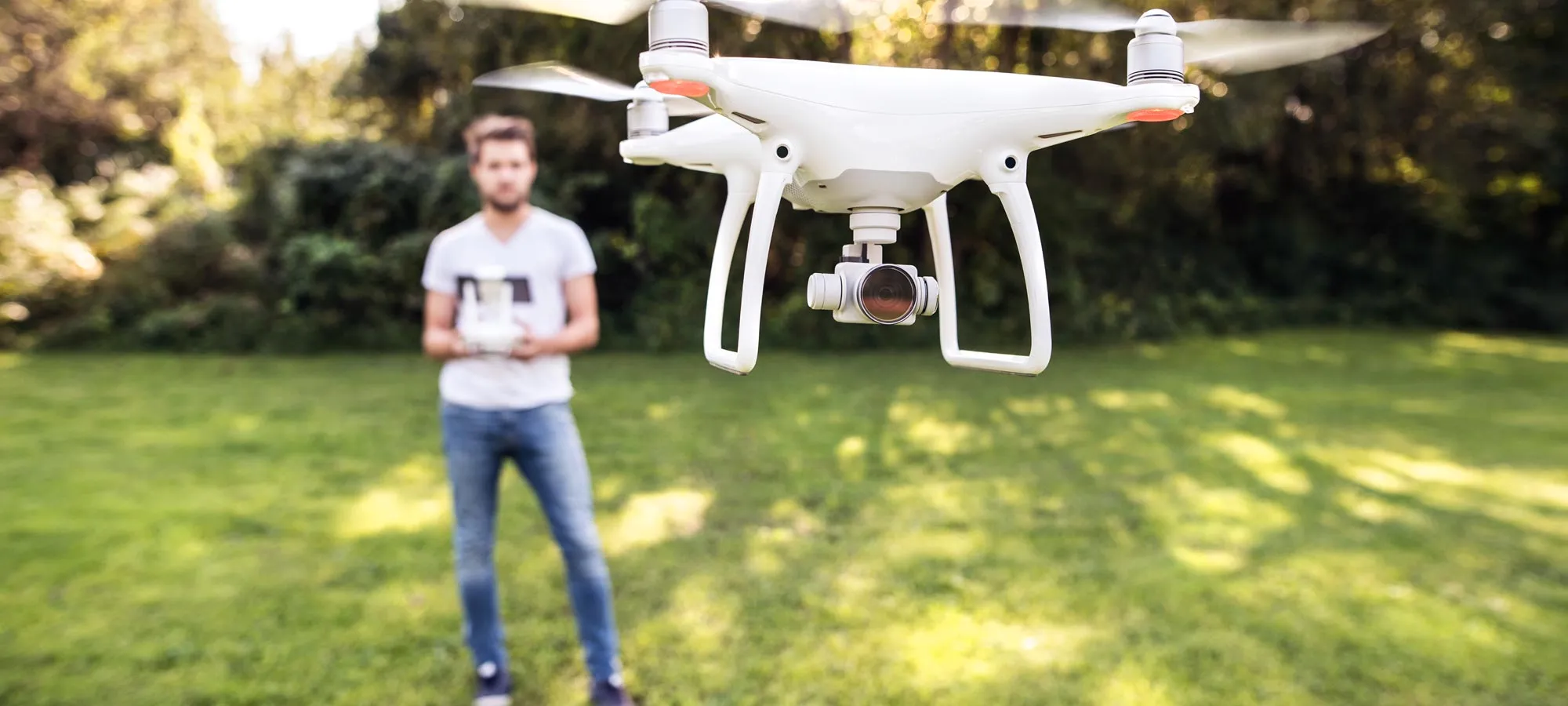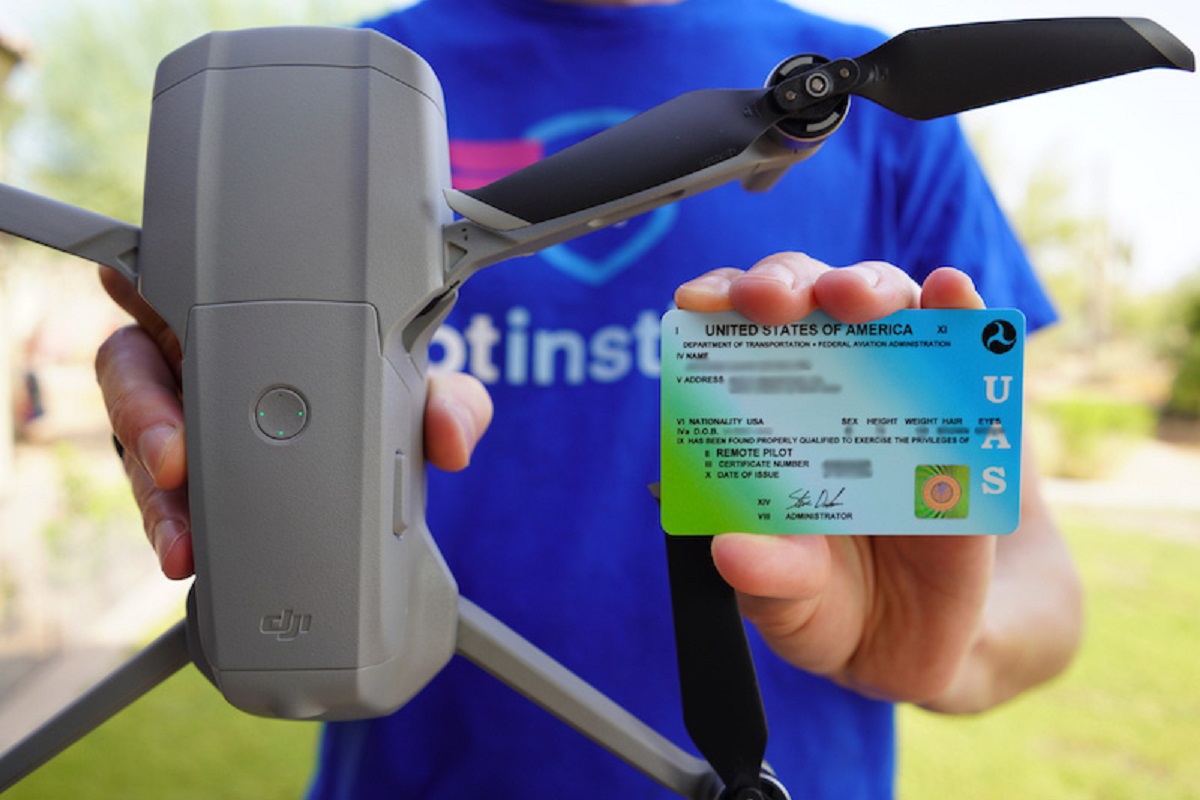Introduction
Welcome to the exciting world of drone flying! As unmanned aerial vehicles (UAVs) become increasingly popular, it’s important to understand the licensing requirements for operating a drone. Whether you’re a recreational enthusiast or intending to use drones for commercial purposes, adherence to rules and regulations is crucial to ensure safety and avoid potential legal issues.
The Federal Aviation Administration (FAA) is the governing body responsible for regulating and overseeing drone operations in the United States. They have established guidelines and licensing requirements to promote safe drone flying practices and protect the airspace.
In this article, we will explore the different licensing requirements for recreational and commercial drone flying. We will also discuss the Part 107 certification, which is necessary for individuals looking to use drones for commercial ventures. Additionally, we will touch on the importance of drone registration and highlight any additional restrictions that may apply.
Understanding these regulations will not only help you navigate the skies safely but also ensure you are in compliance with the law. So, whether you’re a hobbyist eager to capture stunning aerial footage or an entrepreneur seeking to utilize drone technology for your business, let’s delve into the details of the licensing process and operational requirements.
Federal Aviation Administration (FAA)
The Federal Aviation Administration (FAA) is the regulatory authority responsible for overseeing and managing the safe operation of drones in the United States. Their primary goal is to ensure the integration of drones into the national airspace system while minimizing risks and ensuring public safety.
The FAA has established guidelines and regulations that drone operators must adhere to when flying their drones. These regulations are applicable to both recreational and commercial drone operations. Failure to comply with these rules can result in fines and legal consequences.
For recreational drone flying, the FAA has outlined some basic rules to ensure the safety of operators and the public. These rules include:
- Flying drones below 400 feet in altitude
- Keeping the drone in sight at all times
- Avoiding flying near airports or in restricted airspace
- Not flying over people or moving vehicles
- Respecting the privacy of others and not invading their personal space
These rules are essential for maintaining safety and preventing potential accidents or disturbances. It’s crucial for recreational drone pilots to familiarize themselves with these guidelines and fly responsibly.
On the other hand, if you plan to use a drone for any commercial purposes, such as aerial photography, videography, or delivery services, you will need to obtain a Part 107 certification issued by the FAA.
The Part 107 certification is a crucial requirement for drone operators engaged in commercial activities. It requires passing a knowledge test that covers topics such as airspace regulations, weather conditions, and emergency procedures. Obtaining this certification ensures that commercial drone operators have the necessary knowledge to operate drones safely and responsibly in the national airspace.
In summary, the FAA plays a vital role in regulating and overseeing the operation of drones in the United States. Whether you are a recreational or commercial drone operator, it is essential to follow the guidelines and rules set forth by the FAA to ensure safety, protect the airspace, and avoid legal consequences.
Recreational Drone Flying
Recreational drone flying has gained immense popularity in recent years as more and more individuals are drawn to the thrill of piloting these unmanned aerial vehicles. However, it’s important to be aware of the rules and guidelines set forth by the FAA for flying drones recreationally.
The FAA classifies recreational drone flying as non-commercial, personal use of drones. If you fly a drone purely for recreational purposes, there are specific regulations you must follow to ensure the safety of yourself, others, and the airspace.
One of the most fundamental rules for recreational drone flying is to keep the drone in visual line of sight at all times. This means you should always be able to see the drone with your naked eye, ensuring you can maneuver and react to any obstacles or potential hazards.
Additionally, recreational drone pilots are required to fly below an altitude of 400 feet. Flying higher than this can interfere with manned aircraft and pose a significant risk to aviation safety. By staying below this threshold, you help maintain a safe and orderly integration of drones into the national airspace system.
It is crucial to avoid flying drones near airports or in restricted airspace. Flying in these areas can lead to potentially hazardous situations and pose risks to manned aircraft. Always be aware of your surroundings and check for any temporary flight restrictions (TFRs) or local airspace regulations that may affect your intended flight area.
Furthermore, recreational drone pilots should avoid flying over people or moving vehicles. This is to prevent any injury or property damage that may occur in the event of an accident or malfunction. By ensuring a safe distance from people and vehicles, you reduce the risk of harm and liability.
Lastly, respecting the privacy of others is of paramount importance when flying recreational drones. Avoid invading private property or flying in areas where individuals have a reasonable expectation of privacy. Always seek permission from property owners if you plan to fly your drone over their land.
By adhering to these rules and guidelines, recreational drone pilots can enjoy their hobby safely and responsibly. It’s important to remember that drones are not toys and their operation should be taken seriously to avoid accidents, injuries, or legal consequences.
Commercial Drone Flying
Commercial drone flying involves using drones for business-related activities such as aerial photography, videography, surveying, or package delivery. If you plan to use a drone for any commercial purposes, there are specific regulations and requirements you need to meet to ensure compliance with the FAA.
The first step in flying drones commercially is to obtain a Part 107 certification from the FAA. This certification requires passing a knowledge test that covers various topics including airspace regulations, weather conditions, emergency procedures, and more. It ensures that commercial drone operators have the necessary knowledge and understanding to operate drones safely in the national airspace.
Once you have obtained your Part 107 certification, you are authorized to fly drones for commercial purposes, subject to certain limitations and regulations. These include flying the drone below 400 feet and maintaining visual line of sight with the aircraft at all times. However, the FAA has recently introduced a waiver process that allows for limited beyond visual line of sight (BVLOS) operations, provided specific requirements are met.
Commercial drone pilots must also ensure that the drone is registered with the FAA. Drones weighing between 0.55 and 55 pounds need to be registered with the FAA’s Unmanned Aircraft System (UAS) registry. This registration process helps in identifying and tracking drones for safety and regulatory purposes.
It is crucial for commercial drone operators to familiarize themselves with any airspace restrictions or temporary flight restrictions (TFRs) that may be in place before conducting any flights. Flying in restricted airspace or violating TFRs can result in serious consequences and endanger aviation safety.
Additionally, commercial drone operators must comply with privacy laws and respect the privacy of individuals. Capturing images or videos of individuals without their consent in areas where they have a reasonable expectation of privacy is strictly prohibited.
Adhering to these regulations and requirements is essential for operating drones commercially in a safe and lawful manner. It ensures the safety of the public and minimizes risks associated with drone operations. Stay informed and up to date with the latest regulations to maintain compliance and professionalism in your commercial drone activities.
Part 107 Certification
The Part 107 certification is a requirement for individuals who want to operate a drone for commercial purposes in the United States. Issued by the Federal Aviation Administration (FAA), this certification ensures that commercial drone operators have the necessary knowledge and skills to operate drones safely in the national airspace.
To obtain a Part 107 certification, individuals must pass a knowledge test administered by the FAA. This test covers various topics, including airspace regulations, weather conditions, emergency procedures, and drone operation. It assesses the pilot’s understanding of key concepts related to drone flight and safety.
Preparing for the Part 107 exam involves studying the FAA’s Remote Pilot – Small Unmanned Aircraft Systems Study Guide, which outlines the regulations and knowledge areas covered in the test. There are many online resources and study materials available to help aspiring commercial drone operators in their preparation.
The Part 107 exam consists of 60 multiple-choice questions, and a score of at least 70% is required to pass. Once successfully passed, individuals will receive their Part 107 certification, granting them the legal authorization to operate drones for commercial purposes.
With the Part 107 certification, commercial drone operators gain certain privileges and responsibilities. They are allowed to fly drones weighing less than 55 pounds for business purposes, subject to specific operational limitations. These limitations include flying below 400 feet, maintaining visual line of sight with the drone, and avoiding flight over people or moving vehicles.
It’s important to note that the Part 107 certification needs to be renewed every two years. Recertification requires individuals to pass a recurrent knowledge test, which helps ensure that commercial drone operators stay updated with any changes in regulations and maintain a high level of proficiency.
Obtaining a Part 107 certification is not only a legal requirement but also a demonstration of professionalism and commitment to safe drone operations. It signifies that the commercial drone operator has acquired the necessary knowledge and skills to operate drones responsibly and in accordance with FAA regulations.
By obtaining the Part 107 certification, commercial drone operators can confidently pursue a wide range of business opportunities, from aerial photography and videography to inspection and surveying services. It opens doors to various industries and allows individuals to harness the potential of drone technology in their entrepreneurial ventures.
Registering Your Drone
Registering your drone with the Federal Aviation Administration (FAA) is a crucial step for drone owners in the United States. The registration process helps in identifying and tracking drones, ensuring responsible drone ownership, and promoting safety in the national airspace.
As of December 21, 2015, all drones weighing between 0.55 and 55 pounds need to be registered with the FAA. This includes both recreational and commercial drones. Failure to register a drone can result in penalties and legal consequences.
The registration process is relatively simple and can be completed online through the FAA’s DroneZone website. Drone owners need to provide their contact information and pay a nominal registration fee. Once registered, you will receive a unique registration number that needs to be affixed to your drone.
It’s important to note that each individual drone needs to be registered separately. If you own multiple drones, you will need to complete the registration process for each one.
Registering your drone not only fulfills a legal requirement but also brings several benefits. Firstly, it helps in the recovery of lost or stolen drones. The registration number allows authorities to trace the owner of the drone and assist in the retrieval process.
Secondly, it promotes responsible drone usage. By registering your drone, you are acknowledging that you understand the rules and regulations associated with drone flying. This helps in creating a culture of accountability among drone owners and contributes to the overall safety of the airspace.
Lastly, if you plan to fly a commercial drone, having a registered drone is a prerequisite for obtaining the necessary licenses and certifications. Commercial drone operators must provide their unique registration number when applying for a Part 107 certification, demonstrating compliance with FAA regulations.
It’s important to keep in mind that registration requirements may vary for certain special scenarios, such as drones operated by minors or those used for educational purposes. It’s always a good idea to consult the FAA’s official guidelines or seek legal advice if you have any specific registration-related concerns.
In summary, registering your drone with the FAA is a simple yet essential step to ensure responsible drone ownership and promote safety in the airspace. By adhering to the registration requirements, you contribute to a positive drone community and can enjoy flying your drone with peace of mind.
Additional Drone Flying Restrictions
In addition to the general rules and regulations set by the Federal Aviation Administration (FAA), there are additional flying restrictions that drone operators must be aware of to ensure safe and legal operations.
One significant restriction is the prohibition of flying drones near airports or in controlled airspace without proper authorization. Drone flights in these areas can pose a serious risk to manned aircraft, as well as airports’ operations. It’s crucial to respect the no-fly zones around airports and to obtain permission from air traffic control if you have a legitimate reason to fly in controlled airspace.
Another vital consideration is to avoid flying drones in national parks and other protected areas. Many national parks have strict regulations regarding the use of drones due to their potential impact on wildlife and visitor experience. It’s essential to familiarize yourself with the specific rules for each park and obtain any necessary permits or authorizations before flying a drone in these areas.
Restrictions related to privacy are also crucial for responsible drone flying. It is essential to respect the privacy of individuals and avoid invading private property or capturing footage without consent. Flying a drone in places where people have a reasonable expectation of privacy, such as backyards or through windows, is not only unethical but may also lead to legal consequences.
Temporary flight restrictions (TFRs) are another important element to be aware of as they may be implemented due to emergencies, special events, or other critical situations. These restrictions are imposed to ensure the safety of aircraft and individuals on the ground. Always check for any TFRs in your intended flight area and adhere to the imposed limitations and requirements.
Lastly, it is crucial to consider weather conditions when flying a drone. High winds, heavy rain, fog, and other adverse weather conditions can adversely affect a drone’s stability and control. It’s important to monitor weather forecasts and avoid flying in unsafe conditions that could potentially lead to accidents or damage to the drone.
By understanding and adhering to these additional drone flying restrictions, operators can ensure that their flights are conducted responsibly, with due consideration for safety, privacy, and the environment. Staying informed about local regulations and being proactive in obtaining any necessary authorizations will help maintain a positive reputation for the drone community and facilitate the continued integration of drones into our airspace.
State and Local Laws
In addition to the regulations and restrictions set by the Federal Aviation Administration (FAA), drone operators must also be aware of the state and local laws that may apply to their drone operations. These laws can vary from one jurisdiction to another and may impose additional requirements or limitations on drone flying.
Many states and localities have implemented their own specific laws and regulations to govern drone operations within their jurisdiction. These laws can cover a wide range of aspects, such as flight altitude restrictions, flight over private property, drone use in public spaces, and more.
For example, some states have imposed height limitations on drone flights that are more restrictive than the FAA’s general rule of staying below 400 feet. Others have enacted laws that prohibit flying drones near sensitive areas such as schools, hospitals, and government buildings.
In some areas, drone operators may also need to obtain additional permits or authorizations to fly in certain locations or for specific purposes. Local parks, stadiums, or other public venues may require prior approval for drone flights, especially if they involve commercial activities such as photography or videography.
It is essential for drone operators to research and familiarize themselves with the state and local laws in the areas where they intend to fly their drones. This can be done by consulting the relevant government websites or contacting local authorities responsible for regulating drone operations.
Complying with state and local laws is not only a legal requirement but also a way to ensure the safe integration of drones into the community. By respecting these laws, drone operators demonstrate responsible behavior and contribute to the positive perception of drones among the public and local authorities.
It is worth noting that state and local laws are subject to change and may be updated periodically. Therefore, it’s important for drone operators to stay informed about any amendments or additions to the existing laws that may impact their operations.
By keeping abreast of state and local laws and following any requirements or limitations they impose, drone operators can enjoy their hobby or conduct commercial activities in a legal and responsible manner. Understanding and respecting these laws contribute to the overall safety, privacy, and harmony of drone operations within communities.
Conclusion
Operating a drone, whether for recreational or commercial purposes, is an exciting and rewarding endeavor. However, it’s crucial to understand and adhere to the rules and regulations set forth by the Federal Aviation Administration (FAA) and comply with state and local laws to ensure safe and legal operations.
For recreational drone operators, it is important to familiarize yourself with the basic rules, such as flying below 400 feet, maintaining visual line of sight, and avoiding airports and restricted airspace. Additionally, respecting the privacy of others and flying responsibly will contribute to a positive drone community.
Commercial drone operators must obtain a Part 107 certification, which demonstrates their knowledge of airspace regulations, weather conditions, and emergency procedures. Registering the drone with the FAA and following any additional restrictions is also crucial for commercial operations.
It’s important to note that drone regulations and laws are continually evolving, so staying informed about any updates or changes is essential. Additionally, understanding and adhering to state and local laws, such as height restrictions and permit requirements, is necessary to ensure compliance with the specific regulations of the area you wish to fly in.
By following these guidelines, drone operators can enjoy the benefits of drone technology while prioritizing safety, respecting privacy, and maintaining a positive reputation for the drone community. Responsible drone flying not only ensures the well-being of others but also helps pave the way for the continued integration of drones into various industries and sectors.
Remember, responsible drone operation is not just a legal obligation but also a way to foster a culture of professionalism, safety, and respect. So, whether you’re capturing breathtaking aerial footage or utilizing drones for business ventures, always prioritize safety, follow the rules, and fly with care.







